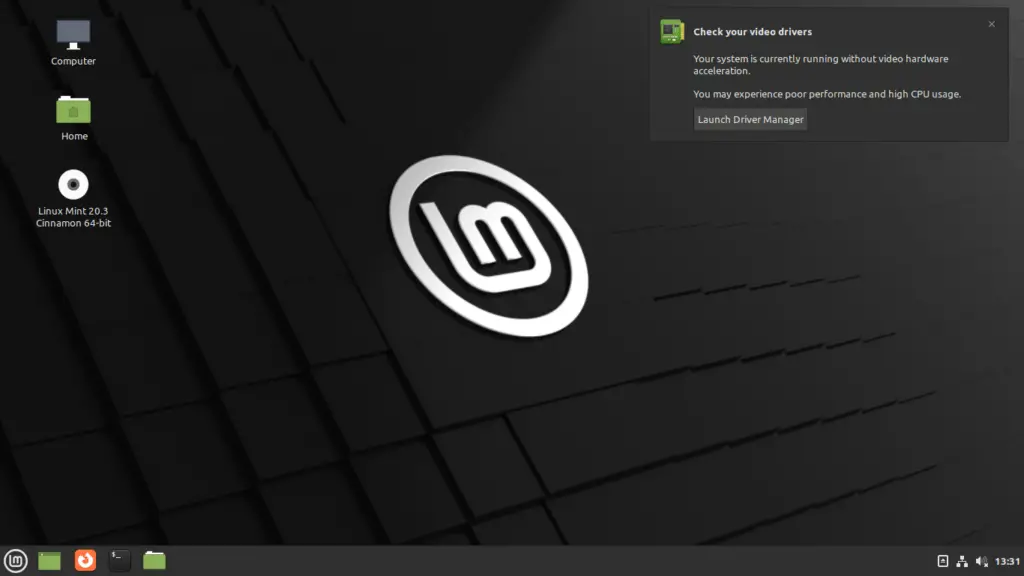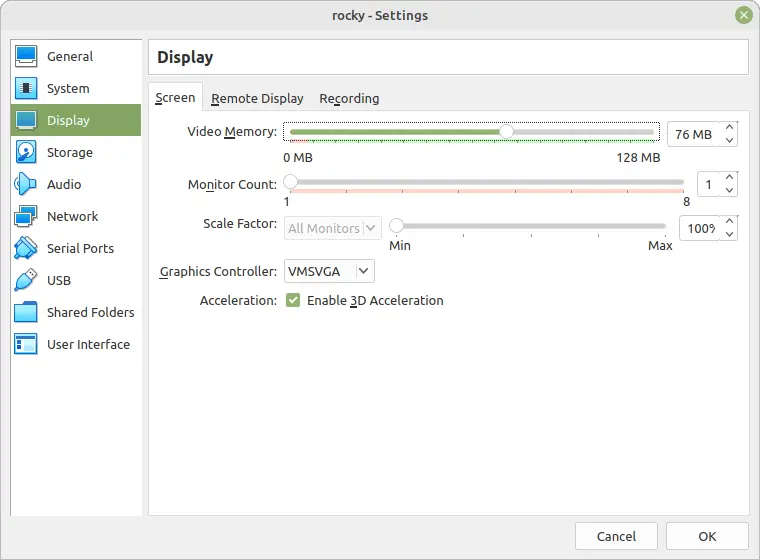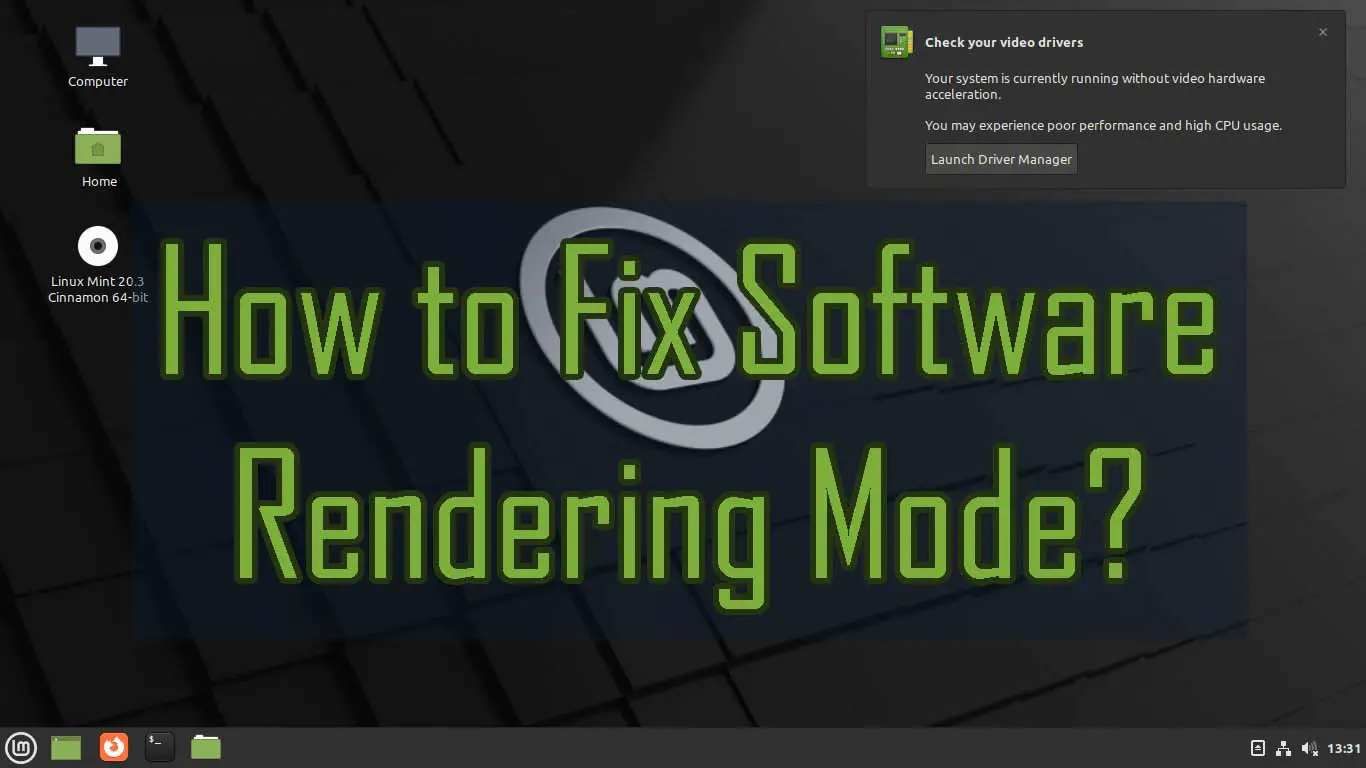Linux Mint is an operating system derived from Ubuntu, so it is quite solid and stable. However, in some circumstances, it can cause hardware-related errors, for example with the graphics card. In these cases, Linux Mint displays the error or warning “Linux Mint running in software rendering mode”. So, what does this mean? Is it a good thing or a bad thing? How do I fix it? What can I do to avoid it? Well, in this post we will help you to give answers to these questions to better understand the error.
Introduction
The error or warning mint running in software rendering mode is specific to the version running with Cinnamon as the desktop environment. Cinnamon is the official desktop environment of Linux Mint because both are developed by the same team.
Cinnamon is powered by Muffin, which is a fork of GNOME’s window compositor Mutter. Thanks to Muffin, we will be able to have a modern, fluid window composition with effects that improve the workflow of the system. In other words, the Muffin is an essential component of the system and above all the desktop environment.
With this in mind, we can say that Linux Mint Cinnamon Edition is a modern system that requires modern hardware. That is to say, one that supports 3D acceleration. So, what happens when you don’t get access to this? Well, the system displays a warning that it can only run in software rendering mode.
What is software rendering mode?
A modern operating system when it starts booting does a check of all hardware present. If the window compositor or desktop environment requires 3D effects, then it will look for hardware modules or drivers in the kernel that allow it to do so.
The problem arises when the system cannot access hardware acceleration, making all rendering software-driven. One of the immediate consequences of this is that all rendering is done through the processor, resulting in higher processor and memory consumption.
The question then arises, what is the difference between software and GPU rendering?
During the process of running a program, be it a complete desktop environment or a specific application, effects, fonts, and so on have to be rendered. Usually, this process is delegated to the graphics card, relieving the load on the processor.
So, when rendering is done by dedicated hardware (graphics card) we will notice better system performance and improved load times.
On the other hand, there is software rendering which, in this case, is used for small system tasks, but when all the rendering is done by it, then the power and processor consumption skyrockets.
So, the main difference is that while the first one takes advantage of all the hardware of the computer, the other one only takes advantage of the processor.
What is software rendering in Linux Mint?
In the specific case of Linux Mint, the Muffin is the window compositor that provides us with the system effects as well as everything else related to the window. Muffin is the one that tells the system when hardware acceleration is not present or available, so the system sends an error similar to this one.

This indicates that all rendering will be software-rendered, but that there will be resentment of system resources.
In short, in Linux Mint this warning indicates that desktop effects, fonts, and window decorations are being done with processor resources and not the graphics card.
How do I turn off software rendering mode?
We will not always find the ideal solution to achieve our goal. One of the possible causes is that Linux Mint is running on a virtual machine that does not have the correct configuration. Regarding Oracle VirtualBox, one of the most widely used programs for creating virtual machines, one solution is to enable 3D support for the virtual machine.
To achieve this, we have to turn on the virtual machine and from the main menu go to Devices > “Insert Guest Additions Cd image” after this, access the file browser, and run the Linux binary.
After this, it is necessary to turn off the virtual machine and from the virtual machine options enable the 3D support as I show you in the image.

In case you are not using Linux Mint on a virtual machine, but it is installed on real hardware, you have to check the options of your graphics card. To get information about it, just run this command.
inxi –G

There you can find out the model, but also the installed driver and other information. This can help you to know if you have to change the proprietary driver (Nvidia and Radeon) to an open-source one. Remember that the process will always depend on the model of your graphics card and your processor.
Another thing that might help with this is to change the kernel version. Either for a more up-to-date one that includes recent drivers or rolls back to previous versions if it worked for you.
Another option, but not recommended, is to turn off system notifications if you are bothered by them. To achieve this, open the system options and go to the Notifications section.
Then, disable notifications like this.

This method only silences notifications and it is not recommended to do so because you will not know things about the system. This can also be detrimental in terms of privacy.
Conclusion
Throughout this post, we have explained everything about the error Linux Mint running in software rendering mode, which is an error that does not allow us to take full advantage of our system due to a problem with 3D acceleration. We have also examined more specifically what are the possible causes of this error and how to fix it. Or at least give you a specific idea about what is going on with it. In addition to this, we established the differences between CPU or software acceleration and hardware or graphics card acceleration.
I hope you found the post useful.
